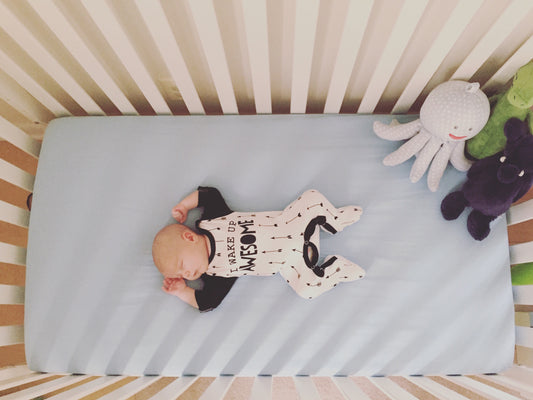How to Prep Your Pup for Baby’s Arrival
They were your first love. You fondly remember the day you first met - their wagging tail, shiny coat and of course all those kisses. If your first baby has four legs and a tail, you're not alone. Many couples adopt a dog as things get serious – it’s good practice for future kids. Now that you’re pregnant, you wonder how your pooch will handle not being the center of attention anymore. Adapting to your little one’s needs is hard on everyone; the same is true for your dog. That’s why we’ve put together these 13 strategies for introducing your dog to baby that will help everything go over smoothly!
Make a vet appointment pronto
Make sure your pooch is up to date on all their shots. You may want to consider having them spayed or neutered – this will make them calmer when baby arrives.
Play pretend
This may sound really weird, but give it a chance. Carrying around a lifelike doll will allow your dog to get used to having baby around and the fact that you will be paying them a lot of attention.
Make behavioral changes now
Behaviors that may seem harmless to adults (i.e. jumping up when you enter the door) can be potentially dangerous when your little one arrives. If your pup is displaying some not-so-great behaviors, try taking them to a training school to straighten things out.
Set-up baby’s gear
Putting together the nursery, baby swing or other toys around the house is a good way to get your dog ready to have their space invaded by your little one’s arrival.
Give ‘em their space
Try setting up a “dog only” space where baby will not have access. Get them used to sleeping there now, and be sure to reward them with plenty of treats. That way they will associate this new arrangement with positive treatment.
Set a new pace
Walking your pup will take on a whole new form with baby. Try going on walks with your stroller so they can learn what behavior is expected of them. Your neighbors may be perplexed, but it’s all in the name of getting your puppy acclimated. If this seems to weird, try inviting a friend with a baby along.
Introduce baby’s smell
After you give birth, have Dad or someone in your family bring home a blanket that baby was swaddled in. This will get them accustomed to baby’s smell before you bring them home.
Take it slow
Remember: you are in no rush for them to meet. There’s nothing wrong with keeping baby and puppy separated for a week or two while you adjust to your new role as a parent.
Adjust your schedule
No doubt your schedule will change when your bundle of joy enters the world; it’s inevitable. Try making changes to the times you walk, feed and spend time with your pup now so that they can get used to the new routine.
Play a tape of baby sounds
Remember when you thought carrying a doll around the house was weird? Babies make a lot of noises that your dog isn’t used to, so playing some baby tracks will help them adjust. YouTube has a plethora of baby sounds videos that should do the trick.
Fortify baby’s space
Consider purchasing a baby gate to make your little one’s nursery off limits to your dog. They should learn the new boundaries now – that way they won’t associate any negative feelings with baby’s arrival.
Create a doggy hospital plan
You already have your hospital bag packed and your car seat installed, but who will feed your dog if baby comes unexpectedly? Arrange for someone to care for your pup while you’re gone; make sure that it’s a friend you can call at 3AM when your water breaks. And have a back-up just in case.
Enter the house first
No doubt your pup will be over the moon excited to see you when you arrive at home! Have Dad hold baby while you head inside alone; allowing your dog to show their excitement. When they calm down, it’s safe to bring baby in.
Our BellyBuds mom’s love their fur babies! We love these photos of our favorite dog moms shared via Instagram using #BellyBuds. Follow @WavHello on Instagram for more fun and helpful new parent content!









